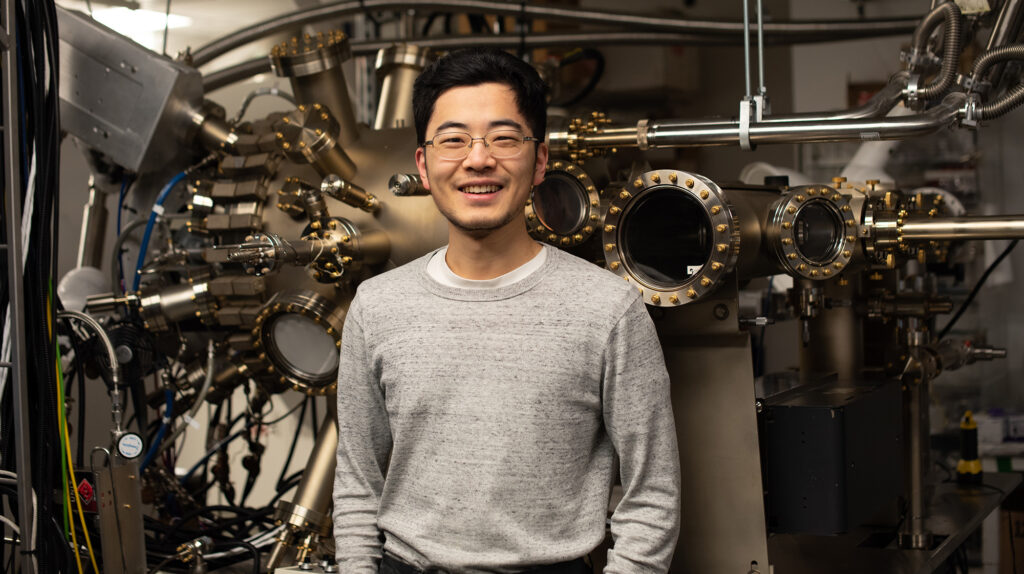Yixin Xiao awarded AVS scholarship for research that supports optoelectronic and renewable energy applications

ECE PhD student Yixin “Arthur” Xiao has been selected to receive the 2023 Dorothy M. and Earl S. Hoffman Scholarship from AVS: Science and Technology of Materials, Interfaces, and Processing (formerly the American Vacuum Society).
Xiao is advised by Prof. Zetian Mi, and his research focuses on using plasma-assisted molecular beam epitaxy to synthesize III-nitride nanostructured devices for optoelectronic and renewable energy applications.
Part of this research includes artificial photosynthesis, which is a process to split water into hydrogen and oxygen by mimicking natural photosynthesis. Hydrogen is attractive as both a standalone fuel and as a component in sustainable fuels made with recycled carbon dioxide, which could significantly help provide the world with clean energy and support carbon neutral goals.
Xiao was part of a team that created an artificial photosynthesis device that was nearly 10 times more efficient than previous solar water-splitting experiments of its kind. He helped examine the sites of catalytic activities using electron microscopes.
Recently, he was part of a team working on visible spectrum micro-LEDs, which are LEDs with device sizes on the micrometer (or even submicron) scale. This includes red LEDs, which are currently used in applications where size and clarity is not an overriding concern, such as street lights and other types of outdoor lighting. However, as augmented and virtual reality (VR) devices become more popular, devising ways to create extremely small pixels becomes increasingly important.
One solution is nanowire LEDs, which are approximately 10,000 times smaller than standard phone display pixels. But red micro LEDs weren’t efficient enough to be practical until Mi’s group achieved a breakthrough efficiency of over 1% for a submicron, unpackaged device, which is on par with blue and green LEDs of similar sizes. Building upon that research, Xiao led the effort to achieve the most stable and efficient red emitting InGaN micro-LEDs in the world.
Xiao has previously been awarded scholarships from SPIE, the international society for optics and photonics, and the Society of Vacuum Coaters Foundation (SVCF). He earned his Bachelor’s degree in Physics from Amherst College, where he was also a member of the Amherst Symphony Orchestra for four years.
 MENU
MENU 
